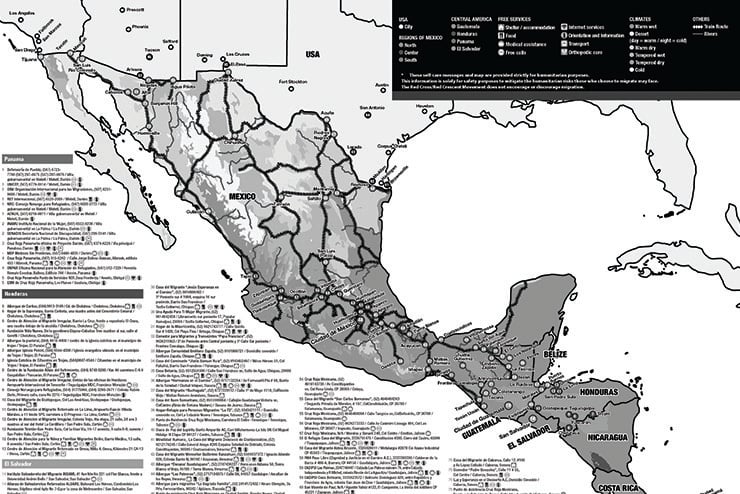The Biden administration used charities and other nongovernmental organizations as proxies to fund the illegal immigration crisis.
One of the most significant policy areas in modernity is the migrant crisis. For the United States to function properly, it is imperative that we understand the consequences of the changes associated with increased migration, the organizations that help facilitate it, and how we, as a nation, can collectively address it. With a net increase of 2.8 million people, migration has accounted for 84 percent of our nation’s nearly 3 million population increase since 2023. It is difficult to ignore the far-reaching effects of these patterns, which greatly overwhelm the social stability of our country.
The first step in understanding the problem is acknowledging that there are those who do nothing but extract resources from the collective common welfare in order to finance these operations. This process involves extracting value through taxation and the denial of responsible government. This “exclusively extractive” class, or better known as the unelected permanent bureaucrat, is not the de jure arm of the State. Rather, it exists entirely on the cheque of the State, having its functions rely on the extraction of the common public albeit functioning independently from the State. This class is built on the State’s monopoly on violence that is exercised through taxation in which this nongovernmental organization (NGO) apparatus—wholly occupied by activists—emerges. This is also known as the nonprofit sector.
The second step in understanding how to approach the problem is to analyze the incentives driving the exclusively extractive activist class and its many nonprofits designed to steward the growing issue of migrant settlement, and the many destabilizing effects that flow from it.
The extractive activist class occupying the NGO industry is primarily concerned with the longevity of these nonprofit organizations. It requires participants to work dutifully for the organization while appearing to observe the mission statement. Myth, even when operating at a mystical level, is the “story behind the story”. It is the validating core for why an organization exists. Myths are crucial, as they highlight the tribal aspect of contemporary organizations, and provide cohesiveness and clarity of direction in the midst of confusion and societal chaos.
For most NGOs today, the mythology surrounding human rights, humanitarian action, and social justice is crucial to their success. It is vitally important for such organizations to retain the significance and perceived validity of these myths not just to itself, but to the general public. Therefore, such organizations require consistent validation from the public in order to secure the legitimacy of their mission statements. For the purposes of organizational survival, it behooves this unelected activist bureaucratic class to create a marketable purpose for itself to retain its place in the socioeconomic ecosystem.
Through persistent outreach and application of traditional and contemporary digital marketing methods, these organizations curry the favor of patrons by weaving poignant stories on the derelict state of the surrounding community, furthering their significance as an organization and the necessity of their existence. This is easy to accomplish, given the empathetic nature of most patrons. The “cause” espoused by these organizations is altogether a virtuous endeavor at the surface level. However, as we will come to see, this activist class seeks not to solve these problems, but to keep them in a permanent state of declining management.
Those occupying the nonprofit sector dedicate themselves to helping the migrant populations in an attempt to manifest images of heroics for the public. It works quite well. These NGOs readily receive millions of dollars through philanthropic contributions. More importantly, however, are the billions of dollars in taxpayer-funded grants from federal agencies like the United States Agency for International Development (USAID) or the Department of State. Notable examples include Catholic Charities USA, Church World Service, and the Hebrew Immigrant Aid Society. These are only a few notable examples from the complex web of the NGO activist network.
Organizations that can only thrive on the unfortunate will naturally seek to prolong misfortune so long it assures organizational survival. Therefore, it is easy to conceive of a reality that the immigration crisis in the United States isn’t an accident. It has become a manufactured and well-oiled system with incentives aligned to sustain its prevailing myth of universal humanitarian obligation.
If there must be a State, then it has an obligation to provide pragmatic solutions to the problems a derelict society faces, with the least amount of money and governmental overreach. It must be emphasized that this is not the responsibility of nearby nations. Organizations that can only thrive on the unfortunate will naturally seek to prolong misfortune so long it assures organizational survival. Therefore, it is easy to conceive of a reality that the immigration crisis in the United States isn’t an accident. It has become a manufactured and well-oiled system with incentives aligned to sustain its prevailing myth of universal humanitarian obligation.
For the last decade or so, Americans have been paying a hefty price to resolve the humanitarian migrant crisis at the southern border. The Department of Homeland Security has contributed to the cause, distributing millions of dollars to NGOs and targeted communities assisting migrants through its so-called Shelter and Services Program (SSP). Through this program, the department allocated well over $300 million dollars towards various entities fostering migrant relocation operations. The implementation of this program was dubious. Catholic Charities of San Antonio, a notable entity within the network of migrant-focused NGOs, was reported to purchase airfare for asylum-seekers through the use of SSP funds.
Occurrences such as these have exhausted the citizenry not only economically, but through the continual impairment of cohesive cultural mores maintaining the social fabric of our nation. The collective exhaustion of Americans accumulated into a force that would change the trajectory of the country in November 2024, when they re-elected Donald Trump as president of the United States. Within the first month of his second term, President Trump signed an executive order suspending refugee admissions. The State Department went even further and issued a stop-work order to their NGO partners.
The implementation of programs that end up harming and even killing citizens by purposefully perpetuating migration problems is the end result of the activities of various NGOs. Specifically, these organizations willfully aim to subvert U.S. immigration policy by providing transportation and other services to migrants, fighting enforcement efforts at the border, subsidizing migrant rents and housing costs, and lobbying for open border policies. Under the Biden administration, the State Department utilized taxes for such endeavors, and financed groups funneling migrants into the United States.

Some of these networks extended as far inland as Springfield, Ohio. NGOs created maps of the U.S. border in foreign languages to reveal which routes were most vulnerable to illegal entry. “Cash and voucher assistance” programs gave migrants financial resources to purchase goods and services. All of these resources were designed to expedite the flow of migrants and to bypass the legal limitations on immigration.
The migrant flows exacerbated conflicts within U.S. industries including agriculture, healthcare, and construction, as those fields routinely prefer to conscript newly settled migrants over native-born citizens.
This toxic alliance between the State and the NGO is driving the country and its people towards an unsustainable degree of debt, ultimately resulting in even more pressing issues, such as trade deficits and reduced investment. With declining native birthrates as a cumulative response to this inert state of conflict, an increase in migration, we are told, is necessary for stability. The flagrantly blatant rhetoric to remove “whiteness” from society has been perpetuated by every major institution since the Black Lives Matter protests. It is therefore difficult to shake the conclusion that these relocation programs are done in service of widespread demographic replacement. This is the cyclical process that extends the myths defining and surviving these NGOs.
The extractive activist class is largely subsidized by government grants. Their salaries, formed by state-obtained tax dollars, are divvied out through opaque and unaccountable bureaucratic channels. However, Trump’s changes to immigration policy, including the deconstruction of USAID, has rendered some of these NGOs largely inoperable, although not totally obsolete. The current administration has recognized how the NGO industry essentially operated as proxies used by the U.S. government to fund the illegal immigration crisis.
If there must be a State, then it must be held accountable for its failures in protecting the public. The seriousness and weight of governing necessarily includes the acceptance of responsibility for the wellbeing of a country’s people. The modern political class has thoroughly abdicated its responsibility by outsourcing the solution-making to committees that only seek to perpetuate committees. The Trump administration has fundamentally exposed the NGO immigration grift, which has accelerated the migration crisis and contributed to rising U.S. crime, job displacement, and demographic replacement.

Leave a Reply